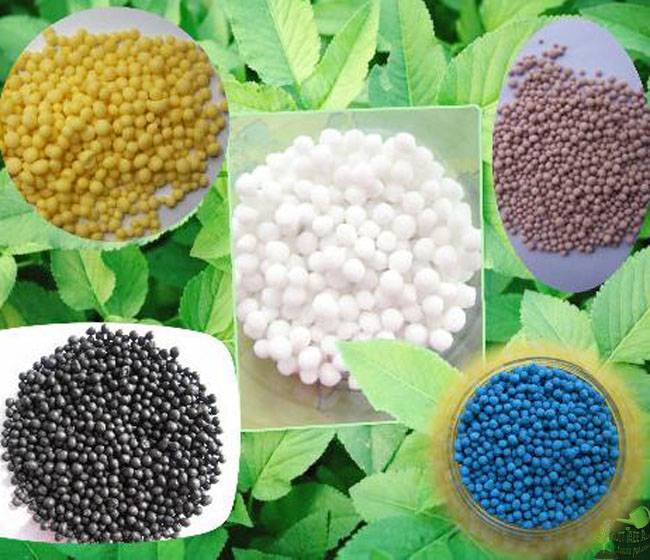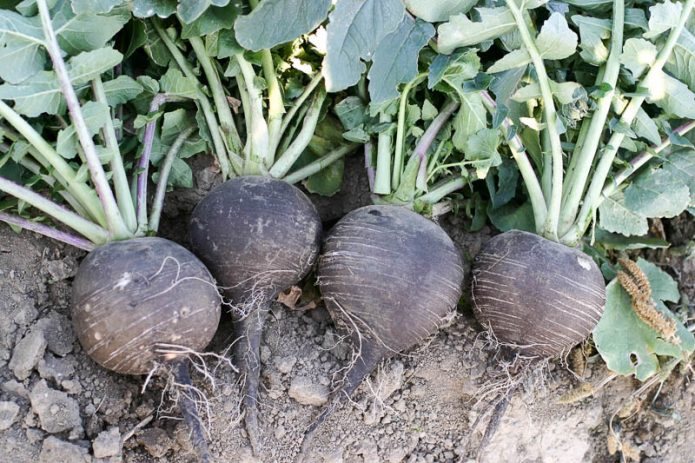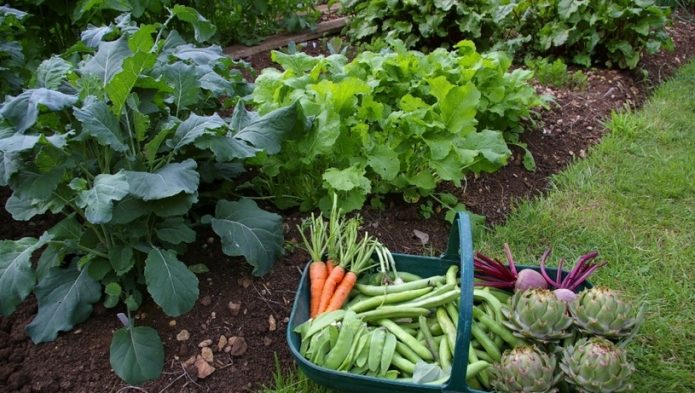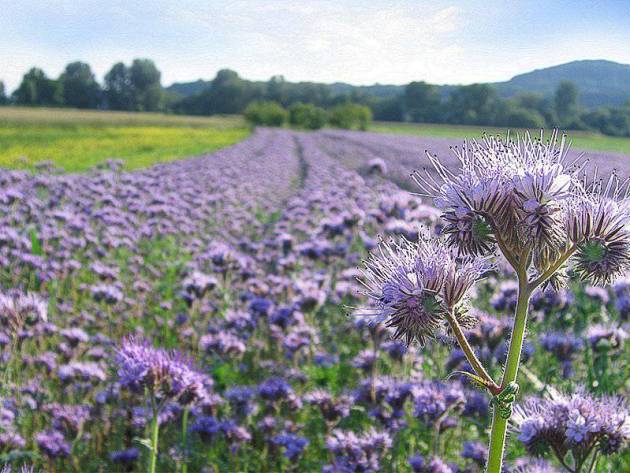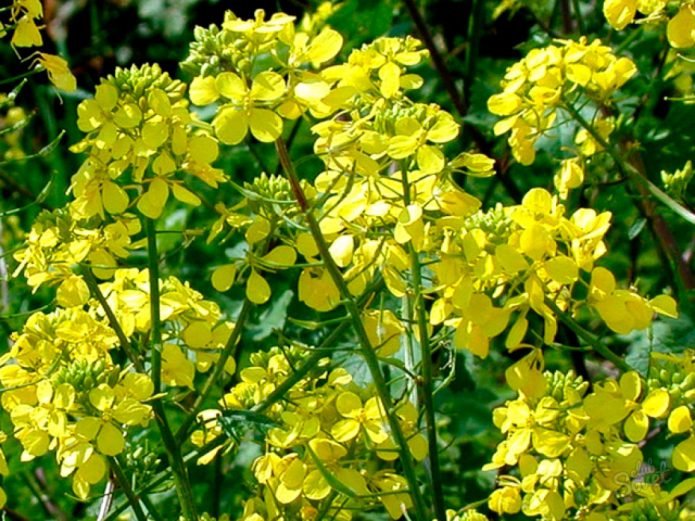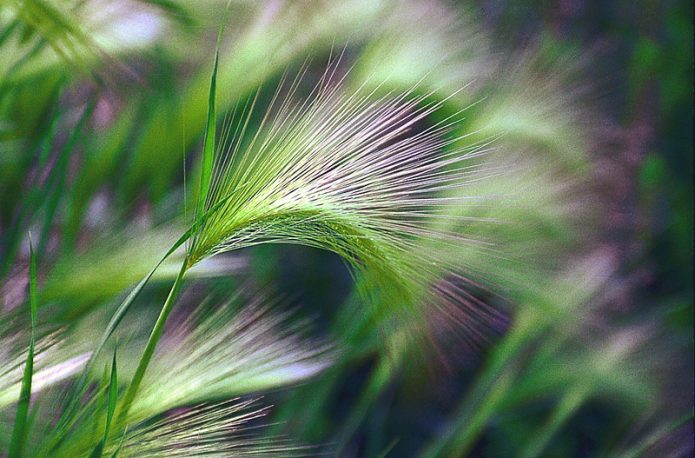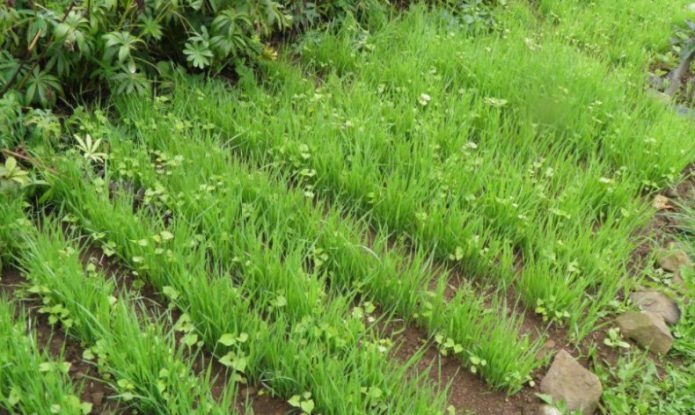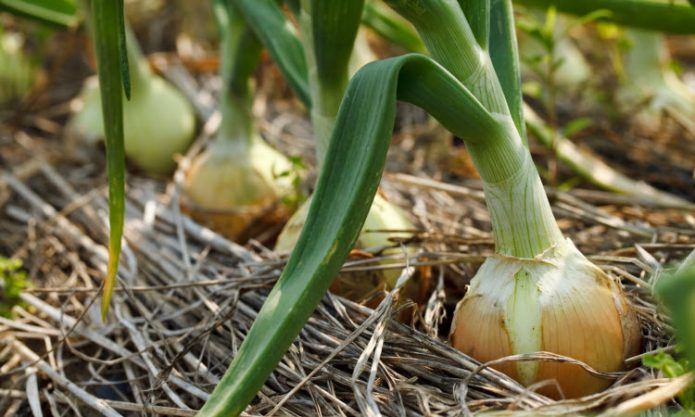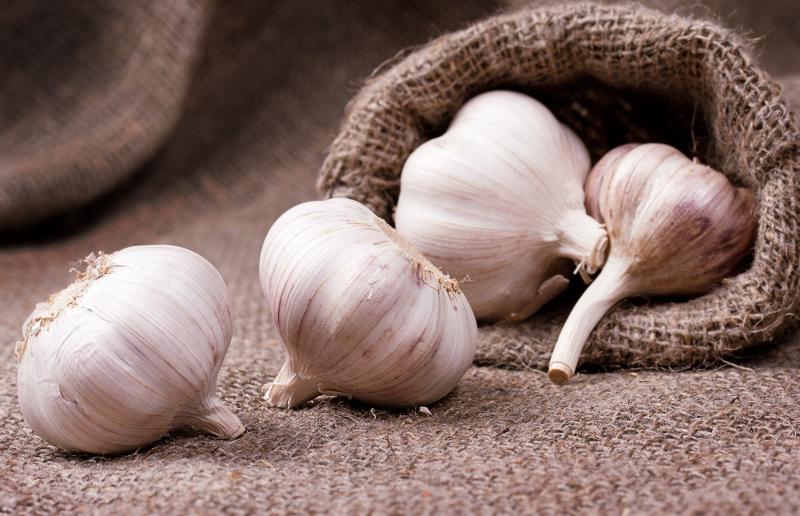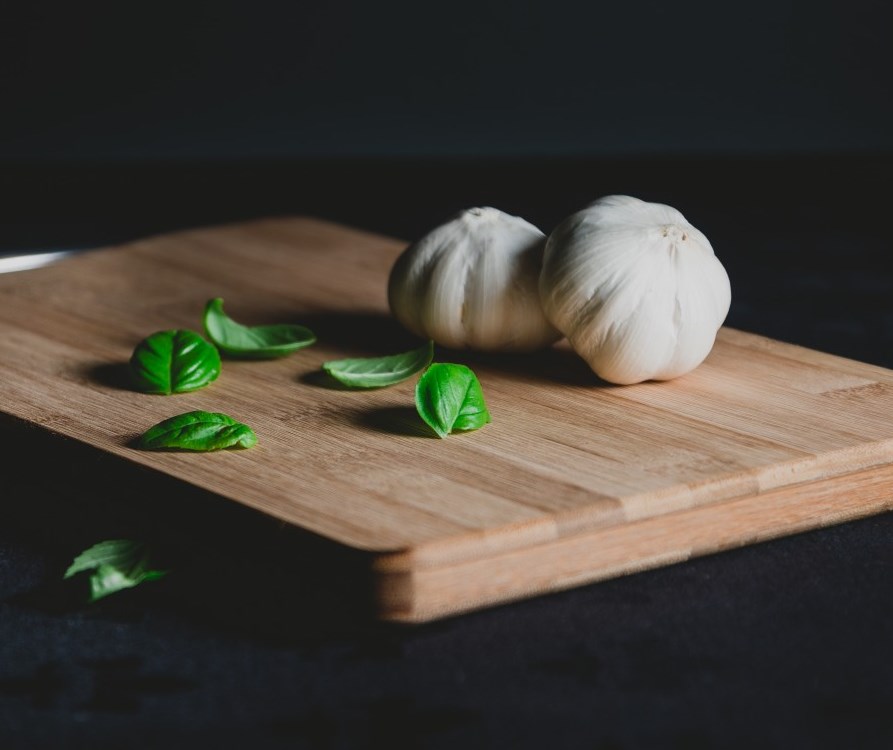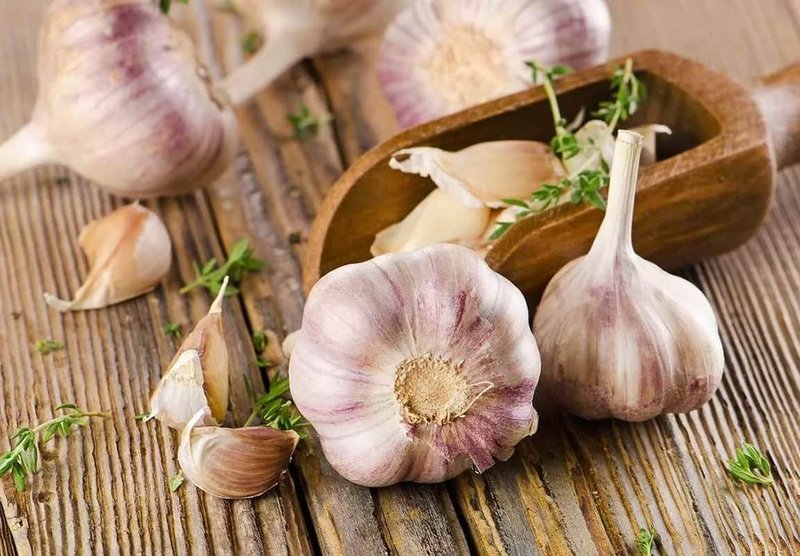If summer has just approached its zenith, and the garden has already been freed from some early crops, can it be used again in the same season and get a second harvest? It’s not okay if weeds begin to dominate the well-groomed beds in which so much effort has been invested. In July, for example, gardeners harvest winter garlic, but what to plant after it?
Content
What will the earth be like
Before planting winter garlic, 6–7 kg of humus and 20–25 g of superphosphates and potassium salt are added to each square meter of soil. The vegetable actively uses all these components, therefore, the next year, after harvesting, the land needs feeding with phosphorus and potassium mixtures - they are again in short supply. But what accumulates in the ground a lot is nitrogen compounds, thanks to them the fertility of the beds remains high enough.
During the growing season, the roots of garlic (as, indeed, any other crop that would be in its place) release mycotoxins - this is how the plant builds a kind of system of its own safety. However, if this vegetable is grown from year to year in the same beds, so many mycotoxins accumulate that they can negatively affect the plant that gave rise to them.
In general, experts characterize the area freed from winter garlic as follows:
- the number of pathogens of various diseases and soil parasites is decreasing;
- the utility coefficient of soil trace elements becomes higher, and the earth is more nutritious;
- applied to the beds on which garlic grew, mineral fertilizers have a weaker effect in the future on the growth and development of vegetables and herbs grown on the freed soil.
To prepare the bed for the next planting, the earth is treated with solutions of copper sulfate or potassium permanganate. And then, during a deep digging, some fungicidal preparation is introduced, and, if necessary, an insecticide, if it is necessary to destroy especially active pests.
What to plant in July on the same garden bed after harvesting garlic
Even certified agronomists do not reject the popular wisdom that after the “tops”, “roots” should be grown, and vice versa. In the case of garlic, this old rule means that the best followers in the garden after the bulbous culture will be vegetables from the Solanaceae family, dill, and cucumbers. The question is what exactly from this list will have time to give a crop in the conditions of the Russian summer, if planting takes place in July. We select crops that will be satisfied with the shortening daylight hours, coolness and will not be afraid of the first frosts.
Vegetables and greens
Cucumbers do well after garlic on nitrogen-rich soils. However, it will be possible to grow them only in the southern regions of the country. In the central ones - provided that the weather does not bring unpleasant surprises, and the owner of the site will take a number of measures.
First of all, you need to select varieties with a short ripening period, and also, bearing in mind the upcoming cold snap, provide for the shelter of the plantings - install arcs on the garden bed in order to close the cucumber lashes with spunbond or agrofibre if necessary.
To save time, it is better to take care of the cucumber seedlings in advance and plant the plants at a distance of 30-50 cm from each other. By the way, it can be grown in eggshells, which are carefully cracked during planting without damaging the roots.
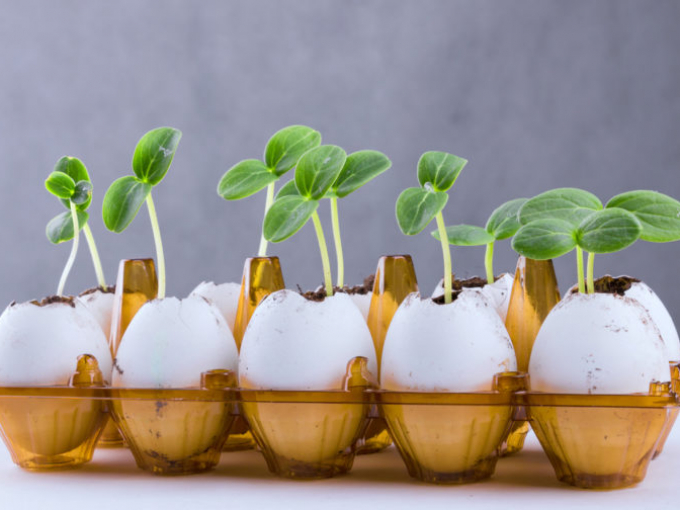
Preliminary preparation for planting cucumbers will give you the opportunity to gain time and collect a rich harvest at the end of summer
The next contender for the vacated square meters of fertile soil is radish. It is generally accepted to grow this vegetable 2-3 times per season with some break. Moreover, the roots of the "second wave", as a rule, are more tender than the early ones, planted in spring. This is due to the reduced daylight hours, due to which the tops do not go into the arrow, and the radish itself does not become "wooden". Having planted it on a former garlic bed, you can expect a harvest in about a month. For secondary plantings, experts recommend the French Breakfast variety.
Different types of radish will also grow well after garlic. This applies, first of all, to black, which is grown for winter storage. The green one (it is also called margelan) will have time to ripen - from sowing to harvesting this vegetable usually takes a little more than two months. Daikon will also grow comfortably, since this culture does not tolerate extreme heat, and, like radishes, a long daylight hours are contraindicated for it - plantings can go into the arrow.
Carrots are not as common as radishes or radishes, but they also become a follower of garlic. Experienced gardeners recommend using the Bureau variety for sowing, which is considered ultra-ripe. Sowing is carried out with pre-soaked seeds, the bed is closed with spunbond. Seedlings appear on the 10th day. The bureau belongs to the so-called "bunch varieties", which can be harvested 55-65 days after planting.
Beans and peas have time to ripen only in the southern regions. In central and central Russia, these crops are usually planted to improve the composition of the soil.
Peking cabbage and various spicy herbs can be planted even at the end of July. Choose according to your taste: parsley, cilantro, arugula, salad, dill. All of these crops will have enough time to reach the "presentation". As for the sun, if the summer remains hot, the planting will even have to be shaded with a light covering material so that the leaves of green crops do not become coarse.
Other plants
A good option for using the beds freed up after garlic is growing green manure. This is the name of plants whose task is to increase the green mass, so that after digging it becomes an excellent organic fertilizer and increases the fertility of the soil. The role of siderates sometimes goes to the already mentioned peas and beans, but there are many other plants that can cope with this role:
- Phacelia is a universal culture. The beds fertilized by her are suitable for any vegetables. If it is planned to plant strawberries in the areas freed from garlic in late summer and early autumn, then phacelia is an ideal option for the bushes to take root well and immediately begin to receive adequate nutrition.
- White mustard is interesting in that it is able to protect the soil from bear and wireworm. The plant provides a large yield of green mass rich in nitrogen. Sometimes, on the eve of winter, the mustard is not mowed so that its tall (up to 70 cm) stems keep the snow cover from weathering.
- Barley, unlike mustard, attracts wireworms, but protects the earth from nematodes and scab. And even after such a green manure, there are practically no weeds on the site.
- Oats are able to enrich the soil with potassium, which means that cucumbers and tomatoes will bear fruit well on these beds in the new season, dense cabbage heads will grow, and there will be a good harvest of root crops.
What is better not to plant after garlic
It is impossible for cultures belonging to the same family to replace each other on the same beds. This means that after the garlic, you cannot occupy the area for the onion. The fact is that these plants need one set of nutrients, and the predecessor, most likely, will have time to spend most of the necessary trace elements on itself. Restoring the optimal composition will take time. Another problem is common pests and diseases: when the garlic is harvested, they can remain in the soil and will definitely go on the offensive if a similar crop settles in the garden.
In addition to bulbous plants (these include shallots, leeks), it is not recommended to place tomato and cabbage seedlings of late varieties, beets and turnips on the freed garlic bed.
Reviews of summer residents
I grow winter garlic on the same plot, after harvesting I plant a daikon, just in time. In autumn, in October, November, depending on the weather, I harvest, I don’t complain about the harvest, I even had to give up the “Fang of the Elephant” variety - my wife doesn’t like root vegetables 0.5 m long.
In July, after the winter garlic is harvested, I sow white mustard in the garden. This is a green manure, which must be mowed or buried in the soil after the growth of greenery. Avoid flowering and seed formation. As a siderat, you can plant oats, phacelia, any legumes. White mustard heals the soil, improves its structure, makes it looser and more fertile, inhibits the growth of weeds. You can sow greens, dill, arugula, lettuce, cilantro, spinach. In July, you can plant radishes, autumn roots grow much tastier than those planted in spring. Some other crops in our Siberian region will no longer grow, at the end of August there are already frosts.
I gave the ground a couple of weeks to rest, and then I planted a radish, a daikon. You can plant potatoes.
We have been planting cucumbers for several years after garlic. just a few pieces of 5 or 6 seeds. and the second harvest of cucumbers is guaranteed to us
Even if the gardener considers his program for growing vegetables completed, it is undesirable to leave the beds empty in the very middle of summer. Need extra radishes and dill? Then it is worth sowing herbs and cereals as siderates - this will be a significant contribution to the harvest of the next gardening season.
